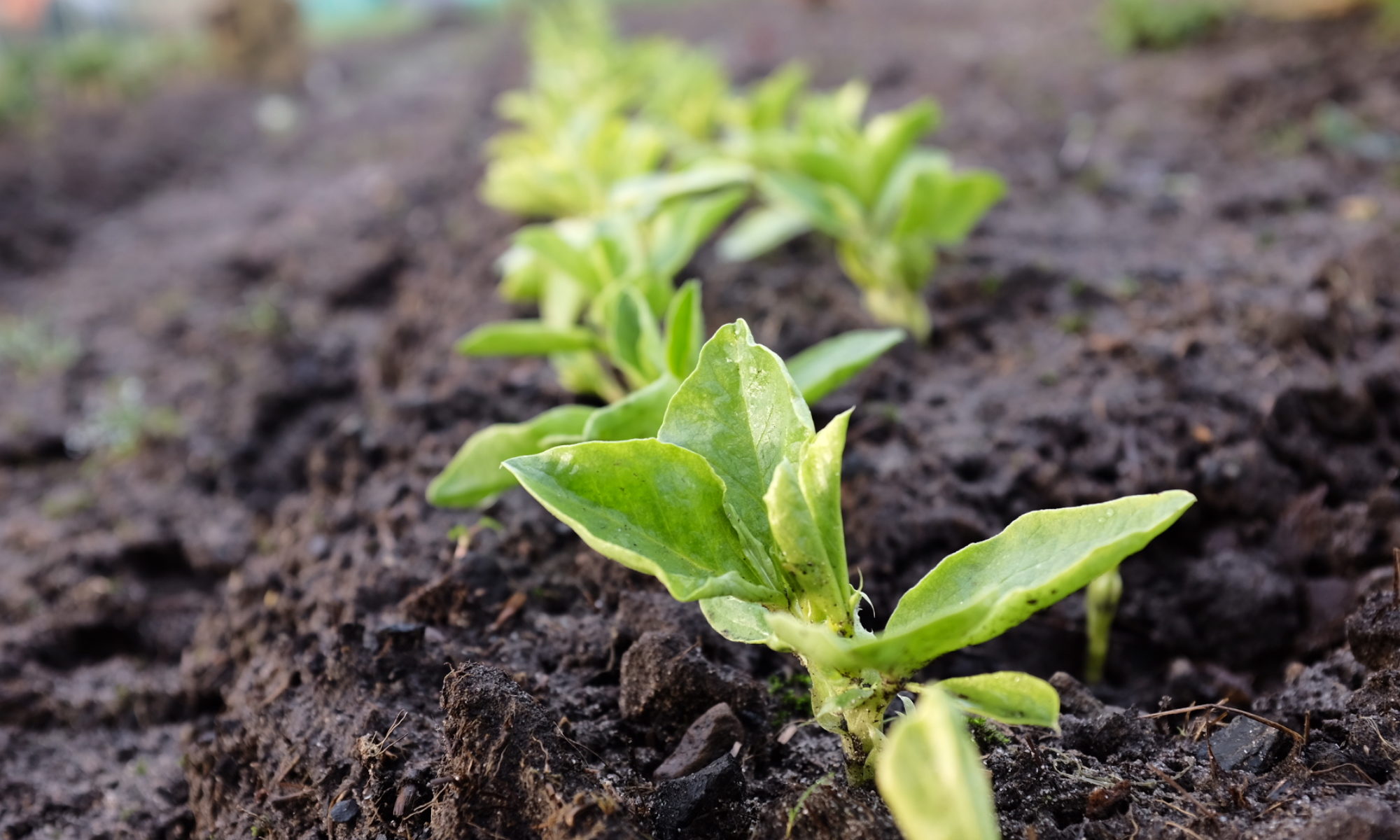
We’ve created an artificial environment for our plants to live in (Poly Tunnel or Glass House) so have to manage that environment for them. This means regulating their temperature and controlling their supply of water, playing God if you like.
Greenhouses in this country are mainly used for ‘season extension,’ starting things off early in the season and extending the growing period into the winter. They also have the advantage of giving protection during weather extremes that can strike in any season (strong winds, pelting rain or hail).
Because the ‘greenhouse effect’ is at work in our artificial indoor environment, any sunshine that falls on the structure causes a rapid temperature rise inside. A closed up poly tunnel can easily reach temperatures above 50 degrees Celsius. That is bad for the crops we want to grow in the poly tunnel. Ideally temperatures between 20-28 degrees are what we want.
Rule number one: keep it cool. If the sun is shining, especially in the summer, those greenhouse doors and windows need opening. Besides lowering the temperatures inside, opening doors, windows and vents also stops excessive humidity building up. High humidity is perfect for fungal disease to develop.
If you wear glasses and you walk into a closed poly tunnel and they instantly steam up, it’s evident that you have excessive humidity.
Watering

From the instant a poly tunnel cover goes onto the frame, rain no longer reaches the soil beneath it; it becomes a desert that we must control. Everything that we want to grow in the poly tunnel on the farm needs water and we supply it.
The smaller the container in which we grow plants, the quicker all the water contained within it will dry up. So, smaller containers like seed trays and small pots need much closer monitoring than large pots and growing beds in the soil of the poly tunnel. In sunny hot weather, seed trays may need watering 2 or 3 times per day to stop the compost drying out and damaging the plants.
The soil beds on the floor of the poly tunnel can usually keep moist enough with a good soaking every couple of days.
The key to all good growing is ‘ATTENTION TO DETAIL’ and monitoring the moisture of the soil or compost that your plants are growing in is all you need to do. Stick your finger in the soil or compost, does it feel dry or moist? The more the sun is shining, the more frequently you need to check if plants need watering.
Rule number two: monitor your soil. Check and monitor how damp your soil is, the sunnier the weather, the more frequently you must do this.
With a climate like ours sunshine, cloud cover, chill winds, wind direction; these all change all the time and many times in one day. Living on an island next to a large ocean, our weather changes quickly and frequently. Perhaps this is why the British are so obsessed with talking about the weather. If protecting your crops and thereby keeping fed relies on this, it’s logical it should become a national obsession, part of our culture.
Keeping things watered is a good thing, but we all know that you can have too much of a good thing. Watering everything, if it needs it or not is a bad thing to do. Because of those changes in weather that I mentioned earlier, it isn’t unusual to have a cool period during the day when a plant’s water requirements will reduce drastically. Adding more water will just cause the plants roots to get saturated simulating the conditions of a swamp; not many vegetables we eat would thrive in a swamp. Too much water excludes air and the growing medium becomes ‘anaerobic’ killing off your plant.
Pots or trays that have been sown with seeds not yet germinated should be kept moist, not wet. Wet compost can cause seeds to rot before they have even germinated.
Rule number three: don’t over water. Don’t get into the habit of watering twice a day no matter what. Too much water can do as much damage as not enough, so monitor the soil before deciding if you need to water.
There is an old saying; ‘the best plant fertiliser is the shadow of the grower.’ In other words, if you are frequently checking your plants and casting a shadow over them, you are doing more for them than providing fertiliser.
Keep an eye on things and look after plants like they are animals (don’t cook or drown them whilst you want to keep them alive) and you won’t go far wrong.
If you leave your dog in a closed up car on a sunny day, they could be dead within an hour or two. Treat plants in the same way.



